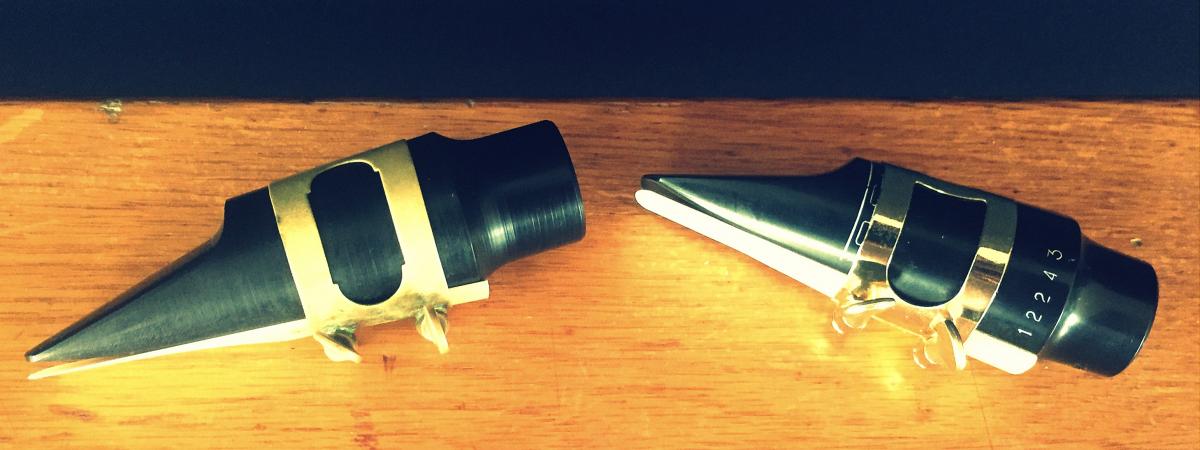Classical Sax vs. Pop/Rock Sax: Move Your Ligature!
When you're first getting into different styles of music on saxophone, usually a teacher suggests that you have different mouthpieces, one for classical playing, one for jazz, and another for pop, rock and similar styles. That's definitely good advice, but something teachers don't always talk about is the idea that you can make more changes to your sound by moving your ligature to different positions on your mouthpiece. Before we get too far, I should mention that there are lots of different ligatures, which are advertised to have lots of benefits, but a ligature that makes a big change in one way will often have disadvantages as well (those aren't advertised!). A lot of fantastic saxophonists in the past used basic ligatures. I'm thinking of Charlie Parker, Sonny Rollins, Cannonball Adderley, John Coltrane, Stan Getz, Michael Brecker, etc. A lot of current greats also use basic ligatures. In my experience, you'll do well with a simple ligature that gets the job done. That being said, it's also a good idea to experiment with different ligatures, but make sure to get your teacher’s recommendation.
One other piece of advice worth mentioning is that you shouldn't over-tighten your ligature. The tighter the reed is clamped down on the mouthpiece the harder it feels. If the reed feels too hard, you end up overtightening your embouchure and squashing your sound. Of course, if the ligature is too loose that can be a problem also.
Ligature Position

Left mouthpiece: ligature towards back, Right mouthpiece: ligature towards front
Depending on which way you move your ligature, there are certain advantages and disadvantages. Each player needs to experience these for himself or herself and figure out what sound they most prefer. What follows is a quick overview to get you started and to help you know what to listen for.
As you move your ligature towards the front of the mouthpiece (towards the beak or tip):
- the connection between notes sounds smoother.
- the sound becomes more spread and more flexible (i.e. you can more easily change your sound depending on how you play).
If you move your ligature too far towards the front of the mouthpiece:
- the sound becomes thin.
- the connection between the notes becomes so smooth that it becomes difficult to hear each note distinctly, especially when playing fast.
- if your reed is pretty stiff or hard or if you have embouchure problems, you may end up with a distorted rough tone.
As you move your ligature towards the back of the mouthpiece (towards the neck of the saxophone):
- the beginning of each note has a clearly heard ping-like quality.
- bends and vibrato becomes more pronounced.
- the sound becomes more focused or compact.
If you move your ligature too far towards the back of the mouthpiece:
- tuning becomes hard to control and is generally sharp in the upper register.
- the tone, though very thick sounding, loses some of its color and can sound a little dull.
Below is a short video demonstrating a middle position, one that is further forward, and one that is further backward. Listen for the different characteristics of each example (listen with headphones).
Conclusion
Experimenting with where you put your ligature can help you get closer to the sound you want. If you are playing pop, rock, or a similar style, you might want to move your ligature slightly towards the back to help your sound fit the style. If you are playing classical music, you may want to move your ligature slightly towards the front. However, this is all meant as a guide for experimentation. You should try moving your ligature to different positions and recording yourself. Listen for the different traits mentioned above, and find a balance that fits your personal sound and style. Last, you should check in with your teacher to make sure you've really got it figured out!
Ben Britton has been a saxophone teacher for over ten years. Aside from teaching general saxophone, he also specializes in alto and tenor saxophone. Sign up for a one-on-one lesson today!
Find MoreSax Classes and Tutorials




Comments
Lígia Silva
Fri, 11/04/2016 - 5:34pm EDT
Permalink
That's a nice subject to
That's a nice subject to explore! In the video the changes seem subtle but you can feel them when you play. Never thought about changing the placement of the ligature to different character of the songs. Will definetly begin to consider that! Thanks!